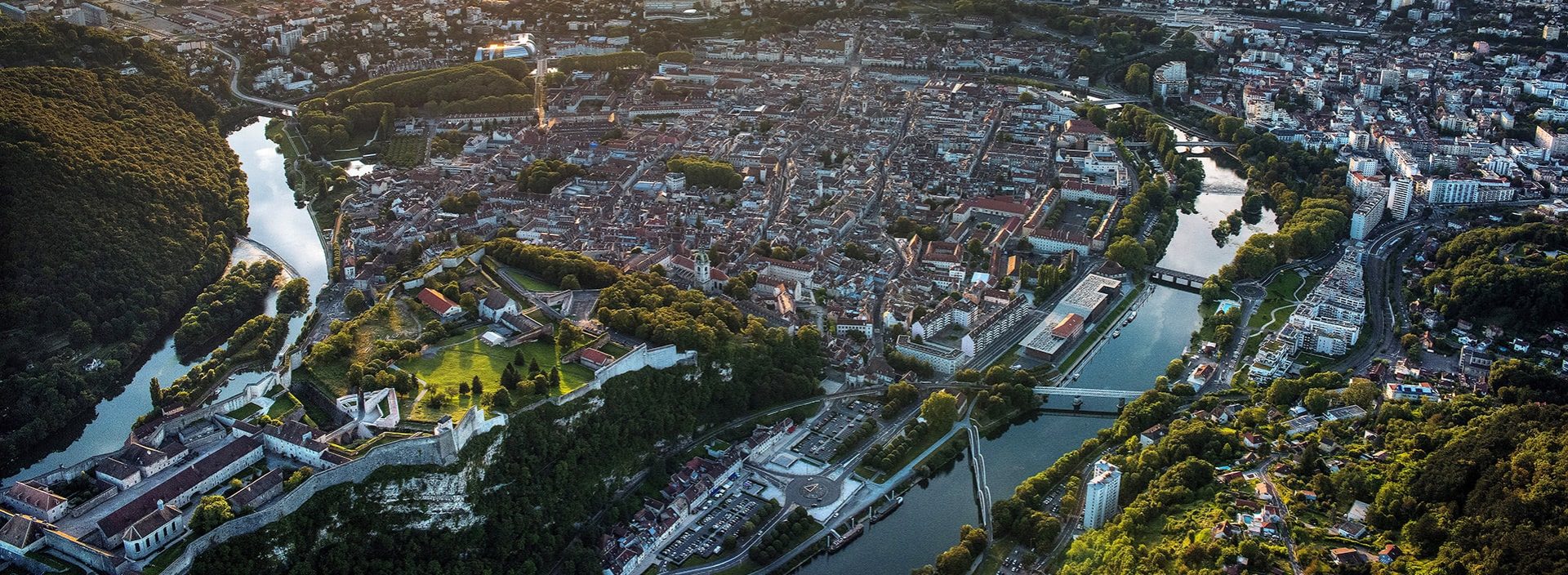
Visit Besançon Capital of time
Escape to Besançon
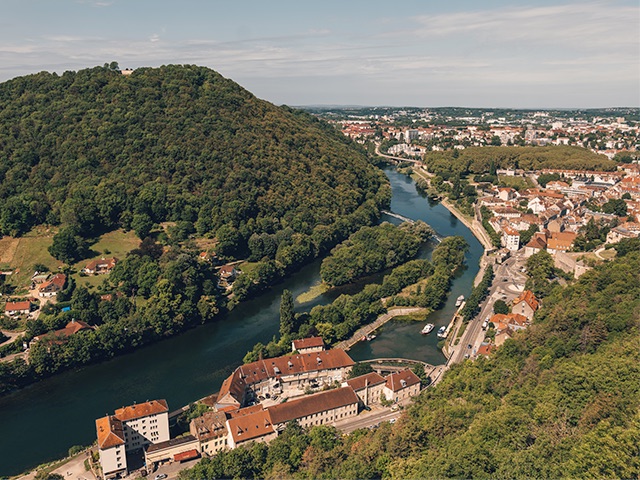
Situated in an exceptional natural environment, Besançon,
a multi-faceted destination, offers a unique experience: visitors can immerse themselves in history, enjoy a wide range of outdoor activities and enjoy all the charms of the "French way of life" in an active and inventive city. All around, nature is generous, with rivers, paths, forests and marshes making up the great diversity of the landscape.
For a weekend or a longer stay, depending on your mood, you can
stroll through the charming streets, visit one of France's finest Fine Arts museums, or discover the town from a panoramic vantage point along the wooded paths.
Besançon is many things: a city of water, the capital of time, the birthplace of great men (Victor Hugo in particular), a winegrowing city with its old Battant district, a land of invention and innovation...and the capital of biodiversity.
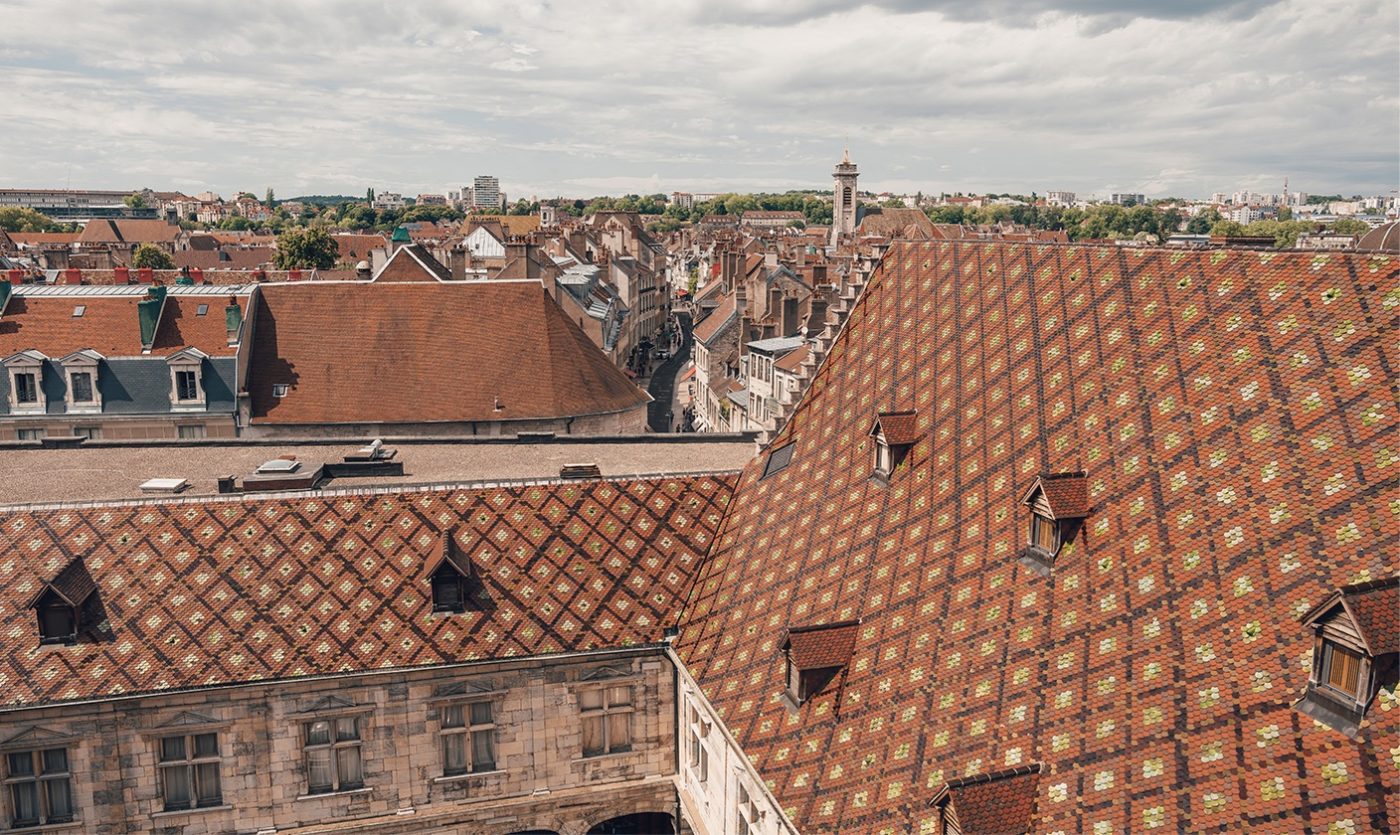
2,000 years of history
Besançon's exceptional site has been occupied by man for over 2,000 years: first by the Gallic people of the Sequans, then by the Romans, following in the footsteps of Julius Caesar, who admired the defensive qualities of the site "whose river forms a loop that looks like it was drawn with a compass". Indeed, Besançon's geographical location is remarkable, and has always been fortified.
After the medieval period, during which the archbishop established himself as a prince of the Holy Roman Empire, came the flourishing Renaissance, exemplified by the de Granvelle family, and then, at the end of the 17th century, the French conquest by the armies of Louis XIV. From then on, Besançon became the capital of Franche-Comté, a French-speaking province long attached to the Habsburg Empire. On the orders of his sovereign, Vauban created an urban wall and transformed the citadel into a veritable architectural masterpiece. As a result, Besançon has been listed as a UNESCO World Heritage Site, one of the major sites in the Vauban network.
Since then, the town has grown steadily, first in the Doubs loop, then beyond it, on the slopes of the site's natural amphitheater.
From the Revolution onwards, the watchmaking industry strengthened the town's dynamism, with watchmakers, originally from Switzerland, establishing themselves in the heart of the town and becoming one of its main activities. By the Second Empire, nearly 400 workshops were established in the city, sharing the watchmaking workload. The creation of a watchmaking school and an observatory at the end of the 19th century ensured the transmission of knowledge and the development of industrial activity. Besançon became the capital of French watchmaking.
Besançon's watchmaking know-how was inscribed on UNESCO's Intangible Heritage List in December 2020.
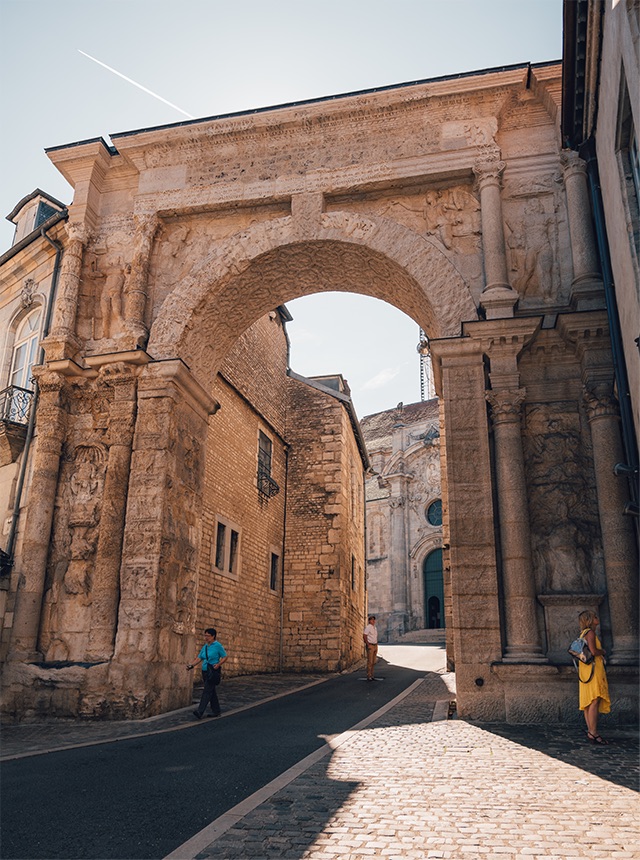
Besançon, City of Art and History
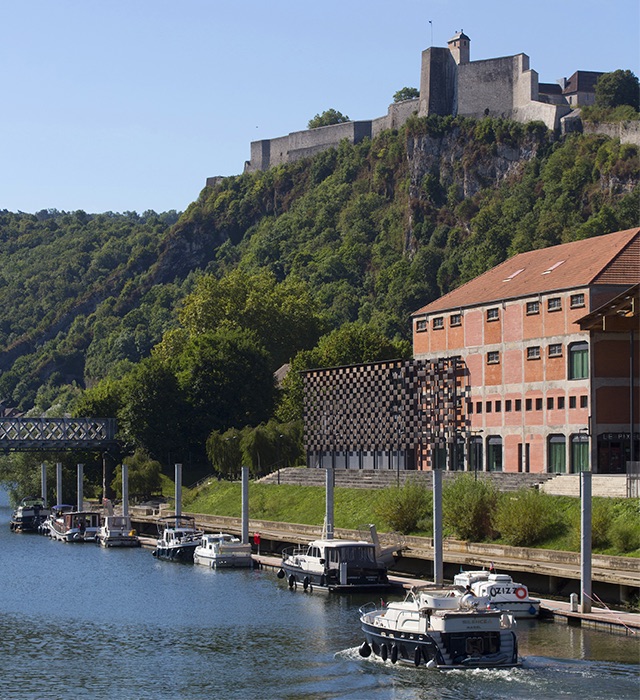
Besançon has been a City of Art and History since 1986
A stroll through Besançon is like wandering through centuries of history, and the old quarters offer visitors their architectural treasures, but it's also an escape into the surrounding forests or along the Doubs River, which surrounds the old town with a natural rampart, doubled by the walls built by Vauban.
As you stroll along, you'll admire the facades of some 200 fine private mansions, mostly built in the 18th century; stroll through Battant, an old winegrowing district built on the slopes that once extended into vineyards; discover the Saint Jean district, nestled on the slopes of the citadel, around the eponymous cathedral. Dating back to the early Middle Ages, this edifice conceals many treasures, including masterpieces of Italian Renaissance pictorial art, and the famous astronomical clock of exceptional complexity. In addition to the bridge, you can go gambling at the casino, in the heart of the former spa district, which was home to Colette, among others.
You can also go to the lower town, around the covered market, and take a seat on a
terrace or stroll along the most pedestrianized shopping streets.
A dense, rich and varied cultural program offers shows, concerts, animations and events around music, contemporary art, fine arts and dance throughout
.
Besançon and the surrounding area offers a wide range of outdoor activities: canoeing, kayaking, hiking, biking, climbing, swimming, gliding, caving, horse-riding, golf ...
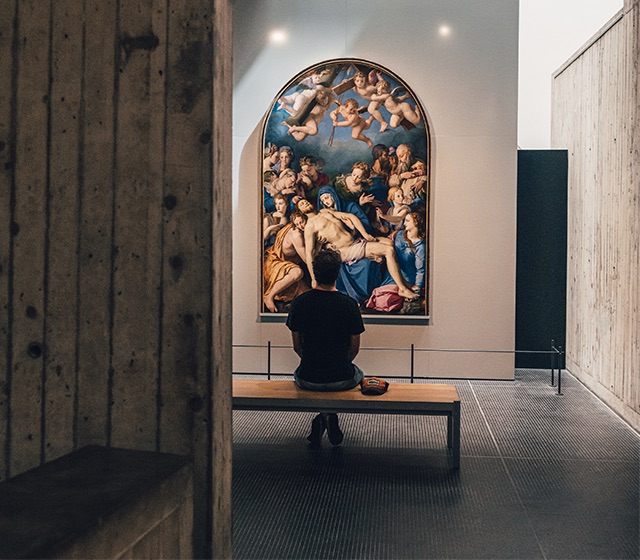
public collection
The must-haves
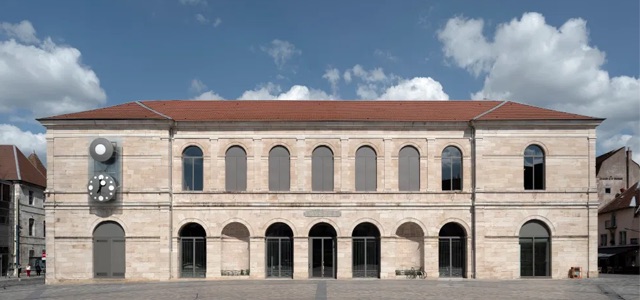
Besançon Museum of Fine Arts and Archaeology
It houses one of the richest and oldest public collections in France. Paintings by prestigious masters, from Bellini to Bonnard to Courbet, justify the reputation of this collection. Its Cabinet des Dessins, with 5,000 sheets, is considered one of the most important in France.
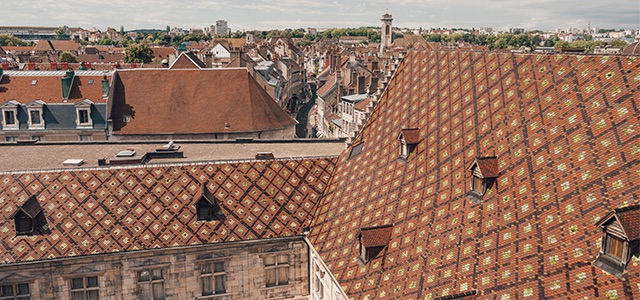
The Museum of Time
Part history museum, part watchmaking museum and part science museum, the Musée du Temps, housed in a magnificent Renaissance palace, pays tribute to Besançon's watchmaking history and tradition.
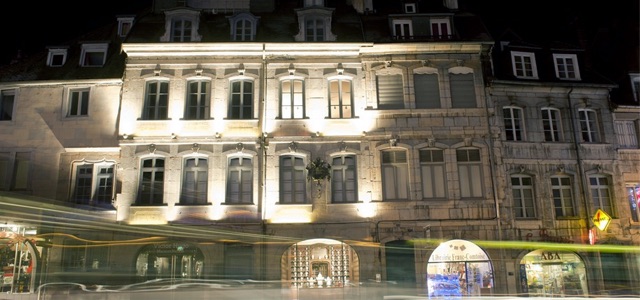
Victor Hugo's birthplace
Conceived as a space for mediation, this house, where the great writer was born, offers a lively museography of the main commitments of Victor Hugo, who was always attached to his native town.
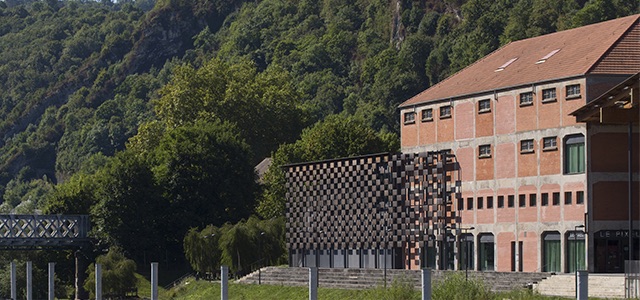
The FRAC
(Fonds Régional d'Art Contemporain) in a magnificent architectural achievement by Kengo Kuma, on the banks of the Doubs, a showcase for contemporary art in all its forms and states.
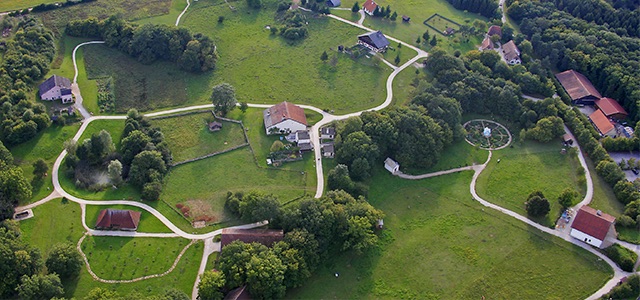
Musée Parc des Maisons Comtoises (Nancray)
On the Jura's first plateau, just 20 minutes from the town center, this open-air museum brings together nearly 30 old buildings rebuilt here to bear witness to the past rural habitat, and offers a program centered on man's relationship with nature.
Useful
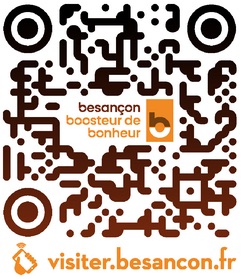
Besançon in a pocket
Visit visiter.besancon.fr to find tourist itineraries, the main places of interest and all the shops in the heart of the city, as well as the calendar of events. You can access these freely, by wifi (visiter.besancon network), the 4G network or by scanning the QR code opposite.
More information on theGreater Besançon Tourist Office website.
A great way to discover Besançon
Tourism Pass on sale at the Tourist Office, and throughout the Ginko network, notably at the departure point of the Ginko citadelle line.
